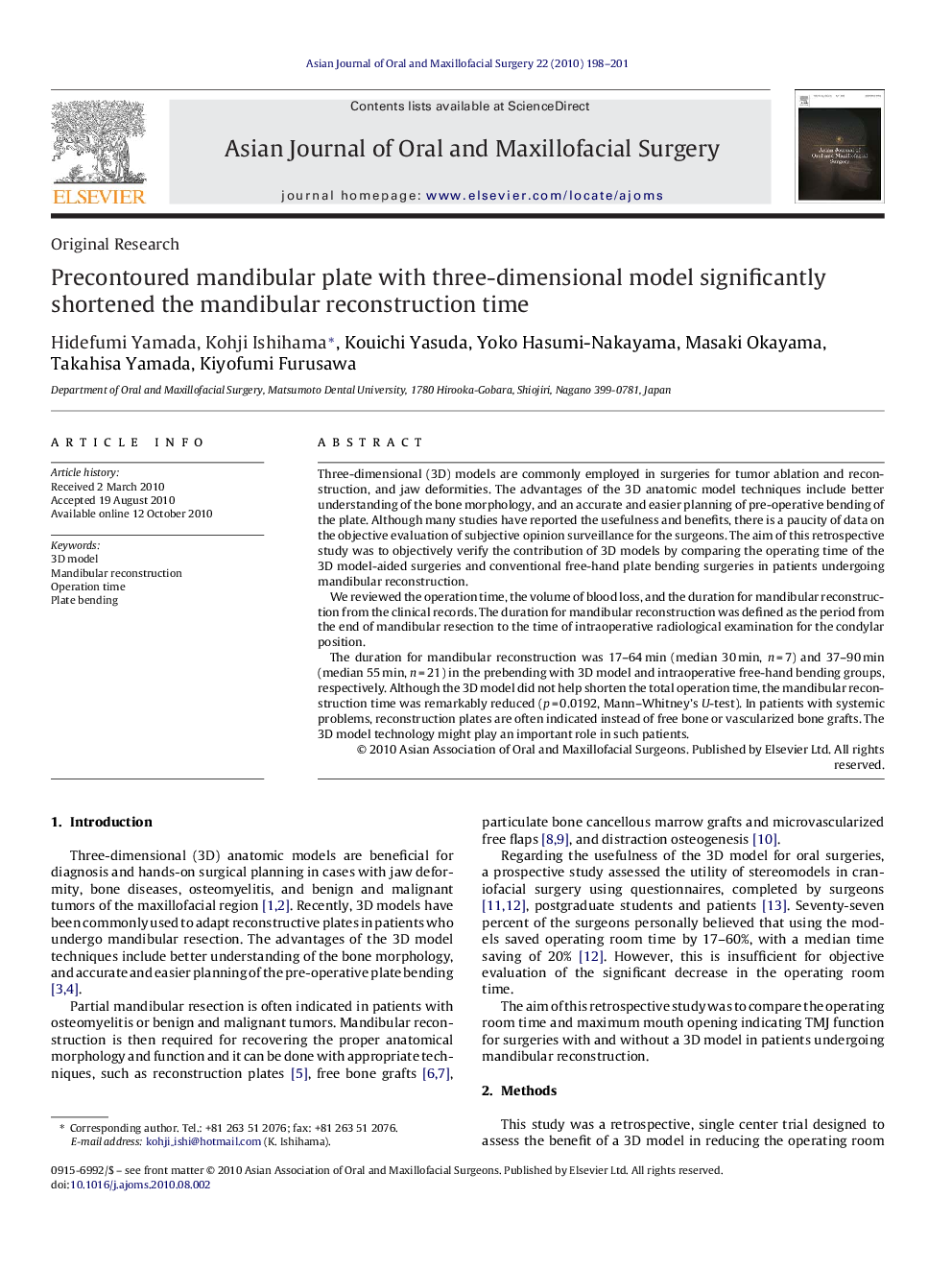| Article ID | Journal | Published Year | Pages | File Type |
|---|---|---|---|---|
| 3122105 | Asian Journal of Oral and Maxillofacial Surgery | 2010 | 4 Pages |
Three-dimensional (3D) models are commonly employed in surgeries for tumor ablation and reconstruction, and jaw deformities. The advantages of the 3D anatomic model techniques include better understanding of the bone morphology, and an accurate and easier planning of pre-operative bending of the plate. Although many studies have reported the usefulness and benefits, there is a paucity of data on the objective evaluation of subjective opinion surveillance for the surgeons. The aim of this retrospective study was to objectively verify the contribution of 3D models by comparing the operating time of the 3D model-aided surgeries and conventional free-hand plate bending surgeries in patients undergoing mandibular reconstruction.We reviewed the operation time, the volume of blood loss, and the duration for mandibular reconstruction from the clinical records. The duration for mandibular reconstruction was defined as the period from the end of mandibular resection to the time of intraoperative radiological examination for the condylar position.The duration for mandibular reconstruction was 17–64 min (median 30 min, n = 7) and 37–90 min (median 55 min, n = 21) in the prebending with 3D model and intraoperative free-hand bending groups, respectively. Although the 3D model did not help shorten the total operation time, the mandibular reconstruction time was remarkably reduced (p = 0.0192, Mann–Whitney's U-test). In patients with systemic problems, reconstruction plates are often indicated instead of free bone or vascularized bone grafts. The 3D model technology might play an important role in such patients.
